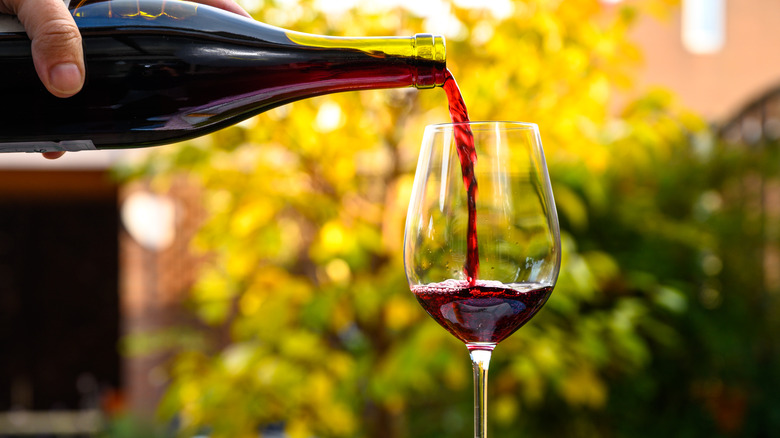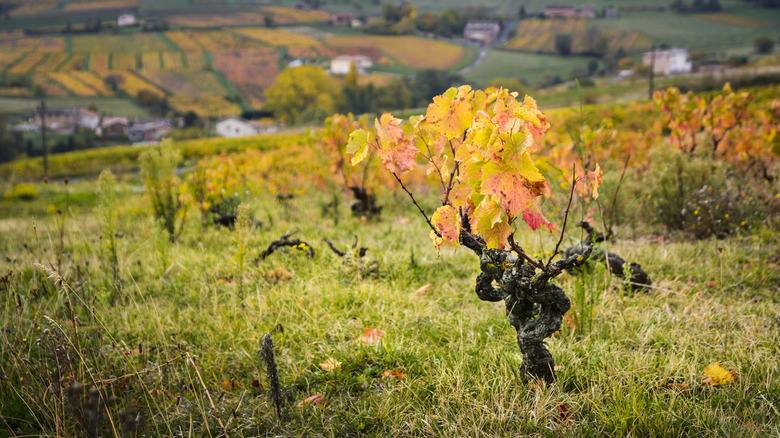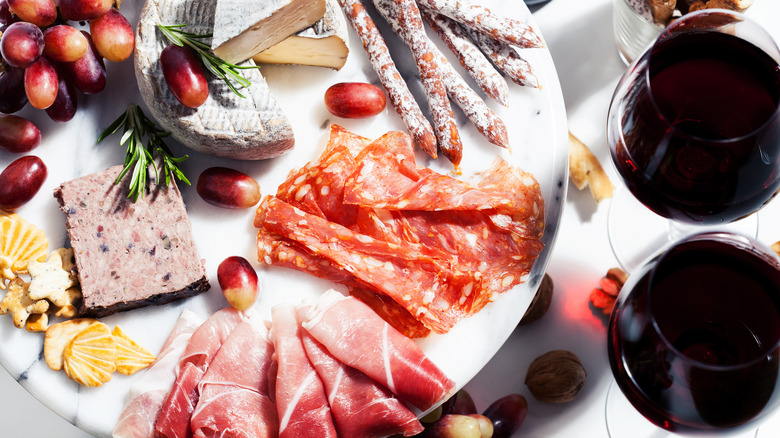The French Wine You Should Know About For Foolproof Pairing
The world of wine can be a daunting one. Even if you are well-versed in vino and know how to navigate a wine store, there's never a lack of new bottles and knowledge to be gained at your fingertips.
Whether you base your wine choices on price point, label design, genre, server recommendations, or because you read something somewhere once that told you it was good, it never hurts to gain a better understanding of what differentiates certain wine varieties from others. To know why for different dishes, seasons, and moods, one bottle may be a better option than another, The New York Times notes.
The rules of pairing your plate with your wine are not hard and fast. It's not as black-and-white as many seem to believe. There are some general rules of thumb to follow, but when it comes to a foolproof red to whip out for any large dinner gathering or party where the menu options run the gamut, one variety reigns supreme. Beaujolais is a pretty foolproof and forgiving pairing with food, but what exactly is it?
What is Beaujolais wine?
Beaujolais wine hails from the Beaujolais region in eastern France, just south of Burgundy. It is made from Gamay grapes, which account for 98% of the vines in the Beaujolais province. Some white wine varieties are grown in the region, but the vast majority of Beaujolais wines are red. Gamay vines are sturdy, prolific, and easy to maintain. In addition, they fair well in the volcanic soil of the region. Gamay grapes grow on what is referred to as a gobelet vine, and unlike the vineyard vines you're probably most familiar with, these vines are pruned to take on more of a bush shape, but no wires are used (via Little Wine).
The Beaujolais region is home to the first natural wines. The process of making Beaujolais wine is slightly different from the traditional method. A step called "carbonic maceration" is added toward the beginning. Typically, grapes are removed from the stem and crushed, as well as exposed to yeast to make the alcohol. With Beaujolais, the entire grape bunch — branches and all — is added to the vat. The weight of the branches crushes some of the grapes and releases juice, causing the remaining whole grapes to ferment internally. This unique process is what gives Beaujolais wine a fruity taste and lower tannins than other red varieties (via Flatiron Wines & Spirits).
How to pair it with food
Beaujolais is touted for being easy to drink. It's known for a lighter body and a higher acidity than most reds. The high acidity level makes it versatile, with a wide variety of foods and an effortless and reliable wine list option with any menu. The modified fermentation process the grapes undergo, combined with the granitic soil and terroir of the region, lend to flavors and aromas of banana, plus other fruits such as cherry and raspberry. Some bottles have notes of mushrooms, smoke, and even bubble gum, per Wine Folly.
Beaujolais is best served slightly chilled. While adaptable in food pairings, Fiona Beckett of Matching Food & Wine calls out the classic French charcuterie as its ideal match. She also suggests it as a red option that pairs well with sushi, as well as seared tuna and salmon. She even suggests a fruity Beaujolais bath for fresh strawberries. Varieties that fall on the fuller end of the full-body spectrum pair well with duck, lamb, and steak frites. They are also a solid option for your next Chinese food takeout night. A versatile vino, indeed.


